#gate classes for electronics and communication engineering
Explore tagged Tumblr posts
Text
youtube
#gate ece#gate ece 2024#gate ece preparation 2024#gate ece video lectures#gate ece syllabus#gate ece 2023 solutions#gate ece full course#gate ece lecture#gate coaching for electronics and communication#gate coaching online#gate classes for electronics and communication engineering#gate aptitude#gate aptitude lectures#gate aptitude questions and answers#gate aptitude 2024#gate aptitude syllabus 2023#gate aptitude previous year questions#gate aptitude full course#Youtube
1 note
·
View note
Text
National Institute of Technology
Established in 1963 as a Regional Engineering College, NIT Kurukshetra was conferred the status of an Institute of National Importance in 2008. Located in the historic city of Kurukshetra, Haryana, approximately 160 km from Delhi, the institute offers a serene and conducive environment for academic and personal growth.
Academic Programs
NIT Kurukshetra offers a diverse range of undergraduate, postgraduate, and doctoral programs:
Undergraduate (B.Tech): Civil, Computer Science, Electrical, Electronics & Communication, Mechanical, Industrial Engineering & Management, Information Technology, Artificial Intelligence & Machine Learning, and Mathematics & Computing.
Postgraduate (M.Tech): Specializations in Structural Engineering, Power Systems, VLSI Design, Thermal Engineering, and more.
MBA: Specializations in Marketing, Finance, Human Resource Management, and Information Technology.
MCA: Master of Computer Applications.
Ph.D.: Offered in various disciplines across Engineering, Sciences, and Humanities.
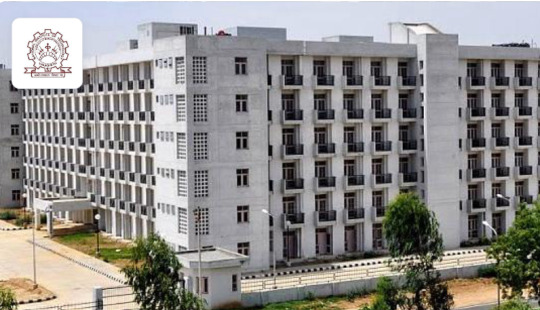
Admissions
B.Tech: Admission is based on the Joint Entrance Examination (JEE) Main scores, followed by JoSAA counseling. Eligibility requires a minimum of 75% aggregate marks in Class 12 with Physics, Chemistry, and mathematics.
M.Tech: Admission is through the Graduate Aptitude Test in Engineering (GATE) scores. Non-GATE candidates may be considered based on academic performance.
MBA: Admission is based on CAT or JMET scores, followed by Group Discussion and Personal Interview.
MCA: Admission is through the National Institute of Technology MCA Common Entrance Test (NIMCET).
Ph.D.: Admission is through an institute-specific entrance test and interview.
Campus and Infrastructure
NIT Kurukshetra's campus is organized into three functional sectors: instructional buildings, hostels, and residential areas for staff. The infrastructure includes:
Library: A spacious library with over 100,000 books, 6,028 back volumes, and 2,800+ online journals.
Centre of Computing and Networking (CCN): A centralized facility providing 24/7 internet access, email services, and online test infrastructure.
Senate Hall: A state-of-the-art conference-cum-canteen facility for seminars and workshops.
Sports Complex: Facilities for basketball, volleyball, lawn tennis, badminton, racquetball, cricket, football, and a 400m athletic track.
Hostels: 12 hostels (9 for boys and 3 for girls) equipped with modern amenities.
Health Centre: Provides OPD services, dental care, laboratory tests, pharmacy, and emergency services.
Placements
The Training and Placement Cell at NIT Kurukshetra facilitates internships and placements for students. In the 2024 placement session:
B.Tech: 590 students placed with an average package of ₹12.68 LPA and the highest package of ₹64.28 LPA.
M.Tech: 197 students placed with an average package of ₹11.19 LPA.
MBA: Offers placements with packages ranging from ₹3 LPA to ₹38.87 LPA.
Top recruiters include Infosys, TCS, Wipro, Google, Amazon, Flipkart, and others.
Research and Innovation
NIT Kurukshetra is actively involved in research projects funded by DST, MHRD, CSIR, AICTE, and UGC. The institute focuses on emerging areas such as artificial intelligence, renewable energy, and sustainable development. Collaborations with industries and academic institutions enhance research output and innovation.
Rankings
As per the National Institutional Ranking Framework (NIRF) 2024, NIT Kurukshetra is ranked 81st among engineering institutions in India.
Conclusion
National Institute of Technology Kurukshetra stands as a premier institution offering quality education, robust infrastructure, and excellent placement opportunities. With a focus on research, innovation, and industry collaboration, it prepares students to meet global challenges and contribute to technological advancements. The institute's commitment to excellence makes it a preferred choice for aspiring engineers and technologists.
1 note
·
View note
Text
Complete List of Courses Offered at IIIT Bangalore (2025)
Introduction:
The International Institute of Information Technology Bangalore (IIIT-Bangalore) is one of India's premier institutions for higher education in the fields of Information Technology and Data Science. With a strong focus on research, innovation, and industry integration, IIIT-B continues to attract top-tier students and recruiters from across the country and abroad.
If you're considering a career in IT, data science, or related domains, understanding the full scope of IIIT-Bangalore courses, admission details, and fee structure is essential.
In this blog, we present a detailed overview of IIIT-Bangalore courses (2025) along with insights into the admission process, cutoff trends, fees, and placements.
Overview of IIIT-Bangalore
Established in 1999, IIIT-Bangalore is a Deemed-to-be University and operates as a not-for-profit society. The institute is known for its academic rigor, modern campus, and collaboration with global tech giants.
It offers a unique blend of integrated, postgraduate, doctoral, and online programs, with a focus on areas like Artificial Intelligence, Cybersecurity, Data Science, VLSI, and more.
IIIT-Bangalore Courses (2025)
Here is the complete list of courses offered at IIIT Bangalore for the academic year 2025:
🔹 Integrated Programs (After Class 12)
Integrated M.Tech in Computer Science and Engineering
Integrated M.Tech in Electronics and Communication Engineering
Duration: 5 years Eligibility: JEE Main score (IIIT-Bangalore cutoff varies by year)
🔹 Postgraduate Programs (After Graduation)
M.Tech in Computer Science and Engineering
M.Tech in Electronics and Communication Engineering
M.Sc in Digital Society (interdisciplinary program)
Eligibility: GATE score (for M.Tech), personal statement and interview (for M.Sc)
🔹 Doctoral Programs (PhD)
Ph.D. in Computer Science, ECE, Data Sciences, and Digital Society
Specializations include Machine Learning, Blockchain, IoT, Cybersecurity, VLSI, and Human-Centered Design.
🔹 Online and Executive Education
Online M.Tech in Data Science and Artificial Intelligence (in collaboration with UpGrad)
Short-term Certification Programs in AI, Blockchain, and Cloud Computing
These programs are designed for working professionals looking to upskill without leaving their jobs.
IIIT-Bangalore Admission Process
The IIIT-Bangalore admission process depends on the program:
For Integrated M.Tech:
IIIT-Bangalore Registration Process is online via the official portal.
Admission is based on JEE Main scores.
Shortlisted candidates must attend counseling and submit documents online.
For M.Tech:
Requires a valid GATE score.
Application, shortlisting, and interview (if applicable).
For M.Sc in Digital Society:
Based on academic record, statement of purpose (SOP), and personal interview.
For Ph.D.:
Based on research proposal, academic background, and interview with the faculty panel.
IIIT-Bangalore Cutoff (2024-25 Trends)
Cutoff ranks for IIIT-Bangalore Integrated M.Tech programs through JEE Main are as follows (estimated from previous years):
Program - General Category Cutoff (Round 1)
IMTech CSE - 8000 – 9000 rank
IMTech ECE - 11000 – 12000 rank
Note: Cutoffs vary each year based on competition and seat intake.
IIIT-Bangalore Fees (2025)
The IIIT-Bangalore fee structure is competitive, considering the institute’s placement outcomes and infrastructure.
Program - Total Fees (Approx.)
Integrated M.Tech - ₹18 – ₹20 Lakh (for 5 years)
M.Tech (2 years) - ₹6.5 – ₹7.5 Lakh
M.Sc Digital Society - ₹4.5 – ₹5 Lakh
Ph.D. - Stipend-based (minimal tuition)
Online M.Tech - ₹3 – ₹4 Lakh (varies by platform)
Additional costs include hostel (~₹70,000/year), mess charges, and exam fees.
IIIT-Bangalore Placements
IIIT-Bangalore boasts excellent placement records, especially in CSE, AI, and data-related roles.
Highlights:
Highest Package (2024): ₹60+ LPA (international)
Average Package: ₹24 LPA (IMTech CSE), ₹20+ LPA (M.Tech CSE)
Top Recruiters: Google, Microsoft, Amazon, Flipkart, PayPal, IBM, Cisco, Intel
Students also secure internships at top firms and have opportunities to publish research internationally.
Conclusion
Whether you're a 12th pass student eyeing an Integrated M.Tech or a graduate looking to specialize in AI, IIIT-Bangalore offers cutting-edge courses aligned with future job markets. With world-class faculty, modern labs, a strong alumni network, and stellar placements, it stands out as a top choice for tech-driven education in India.
For more updates on IIIT-Bangalore admission, registration dates, and entrance prep tips, stay tuned to Learntechww.com – your trusted source for career and education insights.
- Website: https://learntechww.com/university/30/international-institute-of-information-technology-bangalore/
- Contact Us: 1800 120 8696
- Email Us: [email protected]
- Follow Us: Facebook | Instagram | Twitter | LinkedIn | YouTube
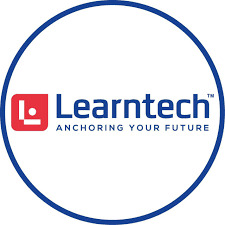
#IIIT-Bangalore#IIIT-Bangalore fees#IIIT-Bangalore Courses#IIIT-Bangalore Admission#IIIT-Bangalore Cutoff#IIIT-Bangalore Registration Process#IIIT-Bangalore Admission Process#IIIT-Bangalore Placements
0 notes
Text
GATE 2026 Video Lectures: The Ultimate Guide to Cracking GATE with Ease!

Are you preparing for GATE 2026? Whether your goal is M.Tech from IITs, IISc, or a high-paying PSU job, one thing is clear—GATE is not an easy exam! You need strong conceptual clarity, problem-solving skills, and the right strategy to succeed.
But with busy college schedules, job commitments, and coaching center limitations, many students struggle to prepare effectively. That’s where GATE video lectures come in!
So, let’s get started! 🚀
Why Choose GATE Video Lectures for GATE 2026?
GATE requires deep conceptual understanding and smart problem-solving skills. With video lectures, you get:
✅ Flexibility – Study anytime, anywhere! No need to adjust your schedule. ✅ Better Concept Clarity – Learn from India’s best faculty in a structured way. ✅ Saves Time & Money – No traveling, no high coaching fees! ✅ Rewatch Difficult Topics – Pause, rewind, and replay until concepts are clear. ✅ Best for College Students & Working Professionals – Study at your convenience.
Many toppers have successfully cracked GATE with just video lectures, proving that self-paced learning works when done right!
How to Use GATE Video Lectures Effectively?
👉 Follow a Study Plan – Watch lectures in a structured way, following a proper schedule. 👉 Take Notes – Writing down key points helps in quick revision. 👉 Solve PYQs & Mock Tests – GATE is all about practice, so apply what you learn. 👉 Clear Your Doubts – Choose a course like EII’s, which provides doubt support for recorded lectures. 👉 Stay Consistent – Watching lectures is just the start; regular practice is key!
Why Engineers Institute of India (EII) is the Best for GATE 2026 Video Lectures?
With so many coaching options available, why should you choose EII for GATE video lectures? Here’s what makes EII the #1 choice for GATE aspirants:
1. India’s Best GATE Faculty
EII’s faculty includes top GATE educators with years of experience in guiding students to AIR 1-100 ranks. Their unique teaching style, shortcuts, and problem-solving strategies make learning super effective.
2. Full Syllabus Coverage for All Engineering Branches
EII offers video lectures for all major engineering disciplines, including:
🔹 Mechanical Engineering 🔹 Civil Engineering 🔹 Electrical Engineering 🔹 Computer Science & IT 🔹 Electronics & Communication Engineering 🔹 Chemical Engineering 🔹 Aerospace Engineering
Each subject is covered in-depth, ensuring you don’t miss a single concept!
3. Exam-Oriented Learning
EII’s video lectures include:
✔️ Concept Explanations with Real-Life Examples ✔️ Numerical Problem-Solving Tricks ✔️ Topic-Wise Video Modules for Step-by-Step Learning ✔️ Previous Year Questions (PYQs) & Exam Trends Covered
4. Personalized Doubt-Solving Support
Even though the lectures are recorded, EII provides expert mentorship and doubt support, so you’re never stuck!
5. Affordable & Flexible Learning
💰 Budget-friendly – Costs way less than offline coaching! ⏳ Time-saving – Study from home without wasting hours on travel. 📱 Access from Any Device – Watch on mobile, laptop, or tablet!
Real Success Stories: How EII’s Video Lectures Helped GATE Toppers
🎓 Rohit Sharma (GATE 2023 AIR 32 – Chemical Engineering) “I relied entirely on EII’s video lectures. The faculty explained everything in detail, and their problem-solving tricks helped me improve my accuracy!”
🎓 Sneha Verma (GATE 2024 AIR 59 – Chemical Engineering) “EII’s structured approach and exam-focused teaching helped me crack GATE with confidence. The recorded lectures were as effective as live classes!”
#gate#gate2026#gate coaching#Gate video lectures#Gate preparations#Gate notifications#Gate Registrations#Gate syallbus#Gate classes
0 notes
Text
Comprehensive AKTU B.Tech IT Syllabus for All Years

The AKTU B.Tech 1st year syllabus lays the foundational framework for engineering students, covering essential concepts across core subjects, practical labs, and professional skills. The first year is divided into two semesters, focusing on mathematics, science fundamentals, engineering basics, and programming skills, vital for higher technical studies.
First Year B.Tech IT Syllabus
Semester 1
Core Subjects
Mathematics-I Introduces calculus, linear algebra, and differential equations for engineering problem-solving and applications.
Physics-I Covers mechanics, wave motion, and thermodynamics, tailored for engineering contexts.
Introduction to Programming (C Language) Focuses on programming fundamentals, data structures, algorithms, and hands-on coding practice.
Electrical Engineering Basics Provides a foundation in circuit theory, electrical machines, and power systems.
Professional Communication Enhances communication, writing, and presentation skills essential for professional growth.
Practical Labs
Physics Lab
Electrical Engineering Lab
Programming Lab (C Language)
Semester 2
Core Subjects
Mathematics-II Delves into advanced calculus, vector calculus, and linear transformations.
Chemistry Covers physical, inorganic, and organic chemistry, with emphasis on engineering materials.
Engineering Mechanics Introduces statics, dynamics, and mechanics of rigid bodies.
Computer System & Programming Explores computer architecture, assembly language, and structured programming.
Basic Electronics Engineering Focuses on electronic devices, circuits, and fundamental applications.
Practical Labs
Chemistry Lab
Basic Electronics Lab
Computer Programming Lab
Second Year B.Tech IT Syllabus
Semester 3
Core Subjects
Data Structures Using C Covers arrays, stacks, queues, linked lists, and trees for efficient data manipulation.
Discrete Mathematics Explores set theory, combinatorics, graph theory, and logic, forming a mathematical backbone for computing.
Digital Logic Design Introduces binary arithmetic, logic gates, combinational and sequential circuits.
Database Management Systems (DBMS) Focuses on relational databases, SQL, and the fundamentals of database design.
Computer Organization and Architecture Delves into CPU structure, memory hierarchy, and I/O systems.
Practical Labs
Data Structures Lab
Digital Logic Design Lab
DBMS Lab
Semester 4
Core Subjects
Operating Systems Covers process scheduling, memory management, file systems, and more.
Software Engineering Introduces software development life cycle, methodologies, and quality management practices.
Object-Oriented Programming (OOP) Using Java Covers OOP principles using Java, focusing on classes, inheritance, and polymorphism.
Theory of Automata & Formal Languages Studies automata theory, regular expressions, and context-free grammars.
Design and Analysis of Algorithms Focuses on algorithmic strategies, complexity analysis, and optimization techniques.
Practical Labs
Operating Systems Lab
Java Programming Lab
Algorithms Lab
Third Year B.Tech IT Syllabus
Semester 5
Core Subjects
Computer Networks Covers networking layers, TCP/IP, routing algorithms, and data communication.
Compiler Design Explores lexical analysis, syntax analysis, semantic analysis, and optimization techniques.
Web Technologies Introduces front-end and back-end web development using HTML, CSS, JavaScript, and server-side scripting.
Microprocessors and Interfacing Covers 8085/8086 microprocessors, interfacing, and assembly language programming.
Elective I Allows students to specialize in a subject area based on their interest.
Practical Labs
Computer Networks Lab
Microprocessor Lab
Web Technologies Lab
Semester 6
Core Subjects
Artificial Intelligence Covers foundational AI techniques, knowledge representation, and learning algorithms.
Distributed Systems Focuses on distributed computing models, coordination, and replication.
Mobile Computing Emphasizes mobile app development, wireless communication, and mobility management.
Advanced Database Systems Covers NoSQL databases, data warehousing, and database security measures.
Elective II Provides an additional specialization option.
Practical Labs
AI Lab
Mobile Application Lab
Distributed Systems Lab
Final Year B.Tech IT Syllabus
Semester 7
Core Subjects
Machine Learning Focuses on supervised, unsupervised learning algorithms, and evaluation models.
Cloud Computing Introduces cloud service models, deployment, and cloud security.
Information Security Covers cryptographic methods, network security, and security threats.
Elective III Tailored to specific industry-oriented needs and interests.
Practical Labs
Machine Learning Lab
Cloud Computing Lab
Major Project Phase I
Semester 8
Core Subjects
Big Data Analytics Explores data mining, the Hadoop ecosystem, and advanced analytics.
Entrepreneurship Development Prepares students with business planning, innovation, and management skills.
Major Project The culmination of academic knowledge in a comprehensive project.
This structured curriculum equips students with in-depth IT skills and knowledge, preparing them for a thriving career in technology and innovation.
1 note
·
View note
Text
VIIT Pune Management Quota Fee, Direct Admission Process
Direct Admission in VIIT Pune through Management Quota
If cracking entrance exams for B.Tech admission seems daunting, but your passion for engineering remains strong, consider securing direct admission in VIIT Pune through the management quota. Here's a detailed guide to help you navigate the process:
Vishwakarma Institute of Information Technology Pune Admission Process:
VIIT offers B.Tech programs in various fields such as computer science and engineering, electronics and communication engineering, electrical and electronics engineering, mechanical engineering, and civil engineering. Admission is facilitated through the Common Entrance Test (CET) or JEE. Students passing the CET or JEE are admitted to their desired programs.
Modes of Admission in VIIT:
1. Central Level Entrance Exam (JEE): Admission can be secured through the JEE Entrance Exam, covering Physics, Chemistry, and Mathematics.
2. State Level Entrance Exam (MH-CET): The MHT-Common Entrance Test (CET) is administered by IIT Bombay. This exam is conducted twice a year and covers Physics, Mathematics, and Chemistry.
3. Management Quota: Direct admission through management quota is available for students who have completed their 12th grade. Seats remaining after counseling rounds can be filled through management quota by paying management fees directly to the college.
Eligibility Criteria for Engineering Admission:
1. B.Tech Admission Eligibility:
- Indian citizenship is required.
- Completion of HSC or its equivalent with Physics, Mathematics, and Chemistry as compulsory subjects.
- Minimum 50% marks (45% for backward classes and persons with disabilities in Maharashtra).
- Non-zero score in CET administered by the Competent Authority.
2. M.Tech Admission Eligibility:
- Indian origin.
- Bachelor’s degree in Engineering & Technology from a recognized institution.
- Non-zero positive result in the Graduate Aptitude Test in Engineering (GATE) conducted by IIT.
Course Seat Intake at VIIT, Pune:
1. Undergraduate Courses:
- Various courses with an intake capacity totaling 1080 seats.
2. Postgraduate Courses:
- Several M.Tech programs with a total intake capacity of 42 seats.
VIIT Pune Management Quota Fee:
1. Undergraduate B.Tech Courses Fees:
- Detailed fee structure based on different categories.
2. Postgraduate M.Tech Course Fees:
- Fee details for M.Tech programs.
Placements at VIIT, Pune:
- Students receive comprehensive training in various areas including resume writing, interview skills, and soft skill development.
- Companies like Avaya, UBS, Tata Elxsi Ltd., Infosys Technologies Ltd., Wipro Technologies Ltd., and many others regularly recruit from VIIT Pune.
- Major recruiters include Persistent Systems Ltd., Mediaocean, Cognizant Technology Solutions, Accenture Ltd., and more.
In Conclusion:
Direct admission in VIIT Pune through the management quota provides an alternative path for students passionate about engineering. By understanding the admission process, eligibility criteria, and fee structure, you can make an informed decision to embark on your engineering journey at VIIT Pune.
#BTECH DIRECT ADMISSION IN VIIT PUNE#DIRECT ADMISSION IN VIIT PUNE THROUGH MANAGEMENT QUOTA#VIIT PUNE MANAGEMENT QUOTA FEE
0 notes
Text
Propelling atomically layered magnets toward green computers
New Post has been published on https://sunalei.org/news/propelling-atomically-layered-magnets-toward-green-computers/
Propelling atomically layered magnets toward green computers
Globally, computation is booming at an unprecedented rate, fueled by the boons of artificial intelligence. With this, the staggering energy demand of the world’s computing infrastructure has become a major concern, and the development of computing devices that are far more energy-efficient is a leading challenge for the scientific community.
Use of magnetic materials to build computing devices like memories and processors has emerged as a promising avenue for creating “beyond-CMOS” computers, which would use far less energy compared to traditional computers. Magnetization switching in magnets can be used in computation the same way that a transistor switches from open or closed to represent the 0s and 1s of binary code.
While much of the research along this direction has focused on using bulk magnetic materials, a new class of magnetic materials — called two-dimensional van der Waals magnets — provides superior properties that can improve the scalability and energy efficiency of magnetic devices to make them commercially viable.
Although the benefits of shifting to 2D magnetic materials are evident, their practical induction into computers has been hindered by some fundamental challenges. Until recently, 2D magnetic materials could operate only at very low temperatures, much like superconductors. So bringing their operating temperatures above room temperature has remained a primary goal. Additionally, for use in computers, it is important that they can be controlled electrically, without the need for magnetic fields. Bridging this fundamental gap, where 2D magnetic materials can be electrically switched above room temperature without any magnetic fields, could potentially catapult the translation of 2D magnets into the next generation of “green” computers.
A team of MIT researchers has now achieved this critical milestone by designing a “van der Waals atomically layered heterostructure” device where a 2D van der Waals magnet, iron gallium telluride, is interfaced with another 2D material, tungsten ditelluride. In an open-access paper published March 15 in Science Advances, the team shows that the magnet can be toggled between the 0 and 1 states simply by applying pulses of electrical current across their two-layer device.
Play video
The Future of Spintronics: Manipulating Spins in Atomic Layers without External Magnetic Fields Video: Deblina Sarkar
“Our device enables robust magnetization switching without the need for an external magnetic field, opening up unprecedented opportunities for ultra-low power and environmentally sustainable computing technology for big data and AI,” says lead author Deblina Sarkar, the AT&T Career Development Assistant Professor at the MIT Media Lab and Center for Neurobiological Engineering, and head of the Nano-Cybernetic Biotrek research group. “Moreover, the atomically layered structure of our device provides unique capabilities including improved interface and possibilities of gate voltage tunability, as well as flexible and transparent spintronic technologies.”
Sarkar is joined on the paper by first author Shivam Kajale, a graduate student in Sarkar’s research group at the Media Lab; Thanh Nguyen, a graduate student in the Department of Nuclear Science and Engineering (NSE); Nguyen Tuan Hung, an MIT visiting scholar in NSE and an assistant professor at Tohoku University in Japan; and Mingda Li, associate professor of NSE.
Breaking the mirror symmetries
When electric current flows through heavy metals like platinum or tantalum, the electrons get segregated in the materials based on their spin component, a phenomenon called the spin Hall effect, says Kajale. The way this segregation happens depends on the material, and particularly its symmetries.
“The conversion of electric current to spin currents in heavy metals lies at the heart of controlling magnets electrically,” Kajale notes. “The microscopic structure of conventionally used materials, like platinum, have a kind of mirror symmetry, which restricts the spin currents only to in-plane spin polarization.”
Kajale explains that two mirror symmetries must be broken to produce an “out-of-plane” spin component that can be transferred to a magnetic layer to induce field-free switching. “Electrical current can ‘break’ the mirror symmetry along one plane in platinum, but its crystal structure prevents the mirror symmetry from being broken in a second plane.”
In their earlier experiments, the researchers used a small magnetic field to break the second mirror plane. To get rid of the need for a magnetic nudge, Kajale and Sarkar and colleagues looked instead for a material with a structure that could break the second mirror plane without outside help. This led them to another 2D material, tungsten ditelluride. The tungsten ditelluride that the researchers used has an orthorhombic crystal structure. The material itself has one broken mirror plane. Thus, by applying current along its low-symmetry axis (parallel to the broken mirror plane), the resulting spin current has an out-of-plane spin component that can directly induce switching in the ultra-thin magnet interfaced with the tungsten ditelluride.
“Because it’s also a 2D van der Waals material, it can also ensure that when we stack the two materials together, we get pristine interfaces and a good flow of electron spins between the materials,” says Kajale.
Becoming more energy-efficient
Computer memory and processors built from magnetic materials use less energy than traditional silicon-based devices. And the van der Waals magnets can offer higher energy efficiency and better scalability compared to bulk magnetic material, the researchers note.
The electrical current density used for switching the magnet translates to how much energy is dissipated during switching. A lower density means a much more energy-efficient material. “The new design has one of the lowest current densities in van der Waals magnetic materials,” Kajale says. “This new design has an order of magnitude lower in terms of the switching current required in bulk materials. This translates to something like two orders of magnitude improvement in energy efficiency.”
The research team is now looking at similar low-symmetry van der Waals materials to see if they can reduce current density even further. They are also hoping to collaborate with other researchers to find ways to manufacture the 2D magnetic switch devices at commercial scale.
This work was carried out, in part, using the facilities at MIT.nano. It was funded by the Media Lab, the U.S. National Science Foundation, and the U.S. Department of Energy.
0 notes
Text
Propelling atomically layered magnets toward green computers
New Post has been published on https://thedigitalinsider.com/propelling-atomically-layered-magnets-toward-green-computers/
Propelling atomically layered magnets toward green computers
Globally, computation is booming at an unprecedented rate, fueled by the boons of artificial intelligence. With this, the staggering energy demand of the world’s computing infrastructure has become a major concern, and the development of computing devices that are far more energy-efficient is a leading challenge for the scientific community.
Use of magnetic materials to build computing devices like memories and processors has emerged as a promising avenue for creating “beyond-CMOS” computers, which would use far less energy compared to traditional computers. Magnetization switching in magnets can be used in computation the same way that a transistor switches from open or closed to represent the 0s and 1s of binary code.
While much of the research along this direction has focused on using bulk magnetic materials, a new class of magnetic materials — called two-dimensional van der Waals magnets — provides superior properties that can improve the scalability and energy efficiency of magnetic devices to make them commercially viable.
Although the benefits of shifting to 2D magnetic materials are evident, their practical induction into computers has been hindered by some fundamental challenges. Until recently, 2D magnetic materials could operate only at very low temperatures, much like superconductors. So bringing their operating temperatures above room temperature has remained a primary goal. Additionally, for use in computers, it is important that they can be controlled electrically, without the need for magnetic fields. Bridging this fundamental gap, where 2D magnetic materials can be electrically switched above room temperature without any magnetic fields, could potentially catapult the translation of 2D magnets into the next generation of “green” computers.
A team of MIT researchers has now achieved this critical milestone by designing a “van der Waals atomically layered heterostructure” device where a 2D van der Waals magnet, iron gallium telluride, is interfaced with another 2D material, tungsten ditelluride. In an open-access paper published March 15 in Science Advances, the team shows that the magnet can be toggled between the 0 and 1 states simply by applying pulses of electrical current across their two-layer device.
Play video
The Future of Spintronics: Manipulating Spins in Atomic Layers without External Magnetic Fields Video: Deblina Sarkar
“Our device enables robust magnetization switching without the need for an external magnetic field, opening up unprecedented opportunities for ultra-low power and environmentally sustainable computing technology for big data and AI,” says lead author Deblina Sarkar, the AT&T Career Development Assistant Professor at the MIT Media Lab and Center for Neurobiological Engineering, and head of the Nano-Cybernetic Biotrek research group. “Moreover, the atomically layered structure of our device provides unique capabilities including improved interface and possibilities of gate voltage tunability, as well as flexible and transparent spintronic technologies.”
Sarkar is joined on the paper by first author Shivam Kajale, a graduate student in Sarkar’s research group at the Media Lab; Thanh Nguyen, a graduate student in the Department of Nuclear Science and Engineering (NSE); Nguyen Tuan Hung, an MIT visiting scholar in NSE and an assistant professor at Tohoku University in Japan; and Mingda Li, associate professor of NSE.
Breaking the mirror symmetries
When electric current flows through heavy metals like platinum or tantalum, the electrons get segregated in the materials based on their spin component, a phenomenon called the spin Hall effect, says Kajale. The way this segregation happens depends on the material, and particularly its symmetries.
“The conversion of electric current to spin currents in heavy metals lies at the heart of controlling magnets electrically,” Kajale notes. “The microscopic structure of conventionally used materials, like platinum, have a kind of mirror symmetry, which restricts the spin currents only to in-plane spin polarization.”
Kajale explains that two mirror symmetries must be broken to produce an “out-of-plane” spin component that can be transferred to a magnetic layer to induce field-free switching. “Electrical current can ‘break’ the mirror symmetry along one plane in platinum, but its crystal structure prevents the mirror symmetry from being broken in a second plane.”
In their earlier experiments, the researchers used a small magnetic field to break the second mirror plane. To get rid of the need for a magnetic nudge, Kajale and Sarkar and colleagues looked instead for a material with a structure that could break the second mirror plane without outside help. This led them to another 2D material, tungsten ditelluride. The tungsten ditelluride that the researchers used has an orthorhombic crystal structure. The material itself has one broken mirror plane. Thus, by applying current along its low-symmetry axis (parallel to the broken mirror plane), the resulting spin current has an out-of-plane spin component that can directly induce switching in the ultra-thin magnet interfaced with the tungsten ditelluride.
“Because it’s also a 2D van der Waals material, it can also ensure that when we stack the two materials together, we get pristine interfaces and a good flow of electron spins between the materials,” says Kajale.
Becoming more energy-efficient
Computer memory and processors built from magnetic materials use less energy than traditional silicon-based devices. And the van der Waals magnets can offer higher energy efficiency and better scalability compared to bulk magnetic material, the researchers note.
The electrical current density used for switching the magnet translates to how much energy is dissipated during switching. A lower density means a much more energy-efficient material. “The new design has one of the lowest current densities in van der Waals magnetic materials,” Kajale says. “This new design has an order of magnitude lower in terms of the switching current required in bulk materials. This translates to something like two orders of magnitude improvement in energy efficiency.”
The research team is now looking at similar low-symmetry van der Waals materials to see if they can reduce current density even further. They are also hoping to collaborate with other researchers to find ways to manufacture the 2D magnetic switch devices at commercial scale.
This work was carried out, in part, using the facilities at MIT.nano. It was funded by the Media Lab, the U.S. National Science Foundation, and the U.S. Department of Energy.
#ai#amp#artificial#Artificial Intelligence#atomic#Big Data#binary#career#career development#challenge#code#collaborate#Community#computation#computer#computer memory#Computer science and technology#computers#computing#crystal#crystal structure#data#Design#development#devices#direction#efficiency#electron#Electronics#electrons
0 notes
Text
Apply online for NTRO Scientist 'B' (74 openings); need first-class Bachelor's, GATE score by January 19, 2024.
New Post has been published on https://www.jobsarkari.in/apply-online-for-ntro-scientist-b-74-openings-need-first-class-bachelors-gate-score-by-january-19-2024/
Apply online for NTRO Scientist 'B' (74 openings); need first-class Bachelor's, GATE score by January 19, 2024.
The National Technical Research Organisation (NTRO) is inviting online applications for the position of Scientist ‘B’. The application process begins on 21st December 2023 and closes on 19th January 2024. The essential qualifications for the position include a first-class Bachelor’s degree in Engineering or Technology in the relevant discipline, along with knowledge of computer applications. Valid GATE score cards are also required. The pay scale for the position is Level-10 of the Pay Matrix, with various allowances and benefits.
The Scientist ‘B’ position is classified as Group ‘A’ (Gazetted, Non-Ministerial) under the General Central Civil Service. On initial appointment, the pay and allowances include basic pay, dearness allowance, special security allowance, house rent allowance, transport allowance, and government contribution towards NPS. Additional facilities and allowances such as annual increment, medical facilities, LTC facilities, children education allowance, and government accommodation are also provided.
Scientific Cadre Officers in NTRO have career prospects based on the ‘Modified Flexible Complementing Scheme’, with promotions based on performance and assessment. The selected candidates will be liable to serve throughout India, including field service and service on sea platforms. They will be on probation for a period of 2 years.
There are a total of 74 vacancies for the Scientist ‘B’ position. The vacancies are divided among different disciplines, including Electronics & Communications, Computer Science, and Geo-Informatics and Remote Sensing. The number of vacancies is provisional and subject to change.
The eligibility conditions for the position include age limit, educational qualifications, and other criteria. The crucial date for determining eligibility is the closing date of online application, which is 19th January 2024. Candidates must possess the required educational qualifications as mentioned in the advertisement. They should also have valid GATE score cards in the corresponding GATE paper.
Candidates belonging to reserved categories must provide relevant certificates in the prescribed format to claim reservation/relaxation benefits. The OBC candidates must produce OBC (Non-Creamy Layer) certificate based on the income for the financial year 2022-23. The candidates claiming reservation for Economically Weaker Sections (EWS) must meet the criteria issued by the Central Government and possess the requisite Income & Asset Certificate. The candidates are required to upload scanned copies of the certificates in the specified formats during the online application process.
The application fee for the position is Rs. 250/- for candidates except SC/ST/Female candidates. The fee should be paid through online payment mode via the applications software. Other modes of payment are not acceptable. The fee once paid is non-refundable.
Candidates can apply for the position online through the official website. They must carefully read the complete advertisement and ensure their eligibility before filling up the application form. Candidates can choose only one subject/field among Electronics & Communications, Computer Science, and Geo-Informatics and Remote Sensing. The application will be treated as complete only if all mandatory steps are completed successfully.
The selection process for the Scientist ‘B’ position includes shortlisting based on valid GATE score, a written examination, and an interview. The shortlisted candidates will be required to appear in the written examination, which will consist of objective/multiple-choice questions. The minimum qualifying marks for the written examination are 50% for unreserved category and 40% for reserved categories. The candidates who qualify in the written examination will be called for the interview. The final selection will be based on GATE score, marks obtained in the written examination, and performance in the interview.
The examination centers for the written examination are Guwahati, New Delhi, Bangalore, Mumbai, Lucknow, and Kolkata. The exact date of the written examination will be notified to the candidates through their registered email ID. The schedule of the interview for the shortlisted candidates will also be notified through email.
Interested candidates are advised to visit the official website for the
The National Technical Research Organisation (NTRO) is inviting online applications for the position of Scientist ‘B’.
The application process begins on 21st December 2023 and closes on 19th January 2024.
The essential qualifications for the position include a first-class Bachelor’s degree in Engineering or Technology in the relevant discipline, along with knowledge of computer applications.
Valid GATE score cards are also required.
The pay scale for the position is Level-10 of the Pay Matrix, with various allowances and benefits.
Introduction
NTRO is inviting online applications for the position of Scientist ‘B’
Application process: December 21, 2023 – January 19, 2024
First-class Bachelor’s degree in Engineering or Technology required
Knowledge of computer applications is essential
Valid GATE score cards also required
Pay Scale and Benefits
Pay scale: Level-10 of the Pay Matrix
Various allowances and benefits included
Group ‘A’ Classification
Scientist ‘B’ position is classified as Group ‘A’ (Gazetted, Non-Ministerial)
General Central Civil Service
Basic pay, dearness allowance, special security allowance, house rent allowance, transport allowance, and government contribution towards NPS
Career Prospects
Career prospects based on the ‘Modified Flexible Complementing Scheme’
Promotions based on performance and assessment
Liable to serve throughout India, including field service and service on sea platforms
Probation period of 2 years
Vacancies and Disciplines
Total of 74 vacancies for the Scientist ‘B’ position
Vacancies divided among different disciplines:
1. Electronics & Communications
2. Computer Science
3. Geo-Informatics and Remote Sensing
Eligibility Conditions
Age limit, educational qualifications, and other criteria must be met
Closing date of online application: January 19, 2024
Required educational qualifications as mentioned in the advertisement
Valid GATE score cards in the corresponding GATE paper
Reserved Categories
Relevant certificates required for claiming reservation/relaxation benefits
OBC candidates must produce OBC (Non-Creamy Layer) certificate based on income
EWS candidates must meet criteria issued by the Central Government and possess Income & Asset Certificate
Application Fee and Process
Application fee: Rs. 250/- (except for SC/ST/Female candidates)
Fee to be paid through online payment mode via the applications software
Other modes of payment not acceptable
Selection Process
Shortlisting based on valid GATE score, written examination, and interview
Written examination consists of objective/multiple-choice questions
Minimum qualifying marks: 50% for unreserved category, 40% for reserved categories
Examination Centers and Schedule
Examination centers: Guwahati, New Delhi, Bangalore, Mumbai, Lucknow, and Kolkata
Exact date of the written examination will be notified through registered email ID
Schedule of the interview for shortlisted candidates will also be notified through email
Don’t Miss Out on this Opportunity!
Exciting opportunity to join NTRO as a Scientist ‘B’
Apply online before January 19, 2024
Reminder of main message: First-class Bachelor’s degree and valid GATE score card required
0 notes
Text
IBM Launches Quantum System Two And Quantum Heron Processor
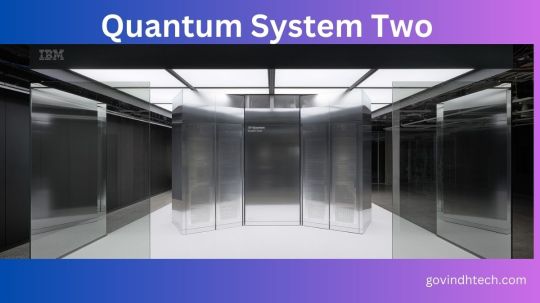
IBM Quantum Heron Processor
The first of a new series of utility-scale quantum processors, IBM Quantum Heron, was unveiled right now at the annual IBM Quantum Summit in New York. Its architecture has been developed over the last four years to deliver IBM’s highest performance metrics and lowest error rates of any IBM Quantum processor to date.
Additionally, IBM debuted IBM Quantum System Two, the first modular quantum computer made by the firm and the main component of their quantum-centric supercomputing architecture. With three IBM Heron processor and accompanying control electronics, the first IBM Quantum System Two, situated in Yorktown Heights, New York, has started up operations.
Now that this crucial framework is in place, the company is extending its IBM Quantum Development Roadmap until 2033 with new goals to greatly improve the quality of gate operations, in addition to other advances in quantum hardware, theory, and software. By doing this, it would be possible to run quantum circuits of greater size and contribute to the full realization of quantum computing’s promise at scale.
IBM Quantum systems can now be used as a scientific tool to examine utility-scale classes of issues in chemistry, physics, and materials beyond brute force classical simulation of quantum mechanics, as proven by IBM earlier this year on a 127-qubit ‘IBM Quantum Eagle’ processor.
Since then, utility-scale quantum computing has been demonstrated more often by eminent scientists, engineers, and researchers from a variety of institutions, including IBM, the U.S. Department of Energy’s Argonne National Laboratory, the University of Tokyo, the University of Washington, the University of Cologne, Harvard University, Qedma, Algorithmiq, UC Berkeley, Q-CTRL, Fundacion Ikerbasque, Donostia International Physics Center, and the University of the Basque Country.
This includes trials currently underway on the brand-new IBM Quantum Heron 133-qubit processor, which the company is currently offering to consumers through the cloud. The first of IBM’s new generation of high-performance processors, IBM Heron offers a five-fold gain over the previous best records set by IBM Eagle, thanks to dramatically improved error rates. Over the course of the next year, more IBM Heron processors will be added to IBM’s fleet of systems, which leads the industry in terms of utility and performance.
The Extended IBM Quantum Development Roadmap and IBM Quantum System Two
The architecture of IBM’s next-generation quantum computing system is built on IBM Quantum System Two. It integrates modular qubit control circuits with traditional runtime servers and scalable cryogenic infrastructure. The new system serves as a foundational element for IBM’s quantum-centric supercomputing concept. This architecture uses a middleware layer to properly integrate quantum and classical workflows. It integrates quantum communication and processing with the help of classical computer resources.
This system is intended to contain IBM’s next generation of quantum processors as well, according to IBM’s recently enlarged ten-year IBM Quantum Development Roadmap. Furthermore, as part of this roadmap, these upcoming processors are meant to progressively enhance the caliber of operations they can perform, hence greatly increasing the complexity and volume of workloads they can manage.
Enhance the Simplicity of Quantum Software Programming with Qiskit and Generative AI
IBM is also presenting plans today for a new generation of its software stack, of which Qiskit 1.0 will be a turning point characterized by speed and stability. IBM is also introducing Qiskit Patterns, which aims to democratize the development of quantum computers.
Quantum developers will be able to write code more quickly and simply with the help of Qiskit Patterns. Its foundation is a set of tools for mapping classical issues to quantum circuits, optimizing those circuits with Qiskit, running those circuits with Qiskit Runtime, and postprocessing the output. Users will be able to create, implement, and run workflows mixing classical and quantum processing in various contexts, such as cloud or on-premise situations, by combining Qiskit Patterns with Quantum Serverless. With the help of these tools, users will be able to construct and execute quantum algorithms more quickly.
Furthermore, IBM is in the forefront of applying generative AI to quantum code programming via its enterprise AI platform, Watsonx. IBM plans to include Watsonx’s generative AI technology to facilitate the automation of Qiskit’s quantum code development. The IBM Granite model series will be adjusted in order to accomplish this.
“Generative AI and quantum computing are both reaching an inflection point, presenting us with the opportunity to use the trusted foundation model framework of watsonx to simplify how quantum algorithms can be built for utility-scale exploration,” stated Jay Gambetta, Vice President and Fellow at the company. “This is a significant step towards broadening how quantum computing can be accessed and put in the hands of users as an instrument for scientific exploration.”
Users and computational scientists can now reliably derive results from quantum systems as they map larger and more complex problems to quantum circuits thanks to the sophisticated hardware found in IBM’s global fleet of more than 100 qubit systems and the user-friendly software that IBM is introducing with Qiskit.
Read more on Govindhtech.com
#technology#govindhtech#technews#news#generativeai#ibm#ibmquantum#quantumcomputer#Qiskit#Quantum Heron
0 notes
Text
youtube
#gate ece#gate ece 2024#gate ece preparation 2024#gate ece video lectures#gate ece syllabus#gate ece 2023 solutions#gate ece full course#gate ece lecture#gate coaching for electronics and communication#gate coaching online#gate classes for electronics and communication engineering#gate aptitude#gate aptitude lectures#gate aptitude questions and answers#gate aptitude 2024#gate aptitude syllabus 2023#gate aptitude previous year questions#gate aptitude full course#Youtube
0 notes
Text
SAGE University, Indore
Introduction
SAGE University, Indore is a leading private university located in Madhya Pradesh, India. Established in 2017 under the SAGE Group (Sagar Group of Education), the university has quickly developed a strong academic and infrastructural foundation. It is recognized by the University Grants Commission (UGC) and accredited with an ‘A+’ grade by the National Assessment and Accreditation Council (NAAC). The institution aims to provide an innovative and industry-relevant education environment to students across various disciplines, making it a preferred destination for higher education in Central India.
Academic Programs
SAGE University Indore offers a broad spectrum of over 100 undergraduate, postgraduate, and doctoral programs through its 14 specialized schools. These include the Institute of Advanced Computing, Institute of Management Studies, Institute of Design, Institute of Law and Legal Studies, Institute of Sciences, and others.
Key academic programs include:
Engineering: B.Tech degrees in Computer Science, Mechanical, Civil, Electrical, and electronics/communication.
Management: MBA programs with specializations in Marketing, Human Resources, Finance, International Business, and more.
Design: Courses in Fashion Design, Interior Design, Graphic Design, and Animation.
Law: BA LLB, BBA LLB, and LLB programs catering to future legal professionals.
Sciences and Pharmacy: B.Sc., M.Sc., B.Pharm, and M.Pharm programs.
Humanities, Journalism, and Mass Communication: Offering creative and communication-focused disciplines.
The curriculum is regularly updated to meet industry standards and integrates classroom learning with hands-on experience through projects, internships, and workshops.

Admission Process
The SAGE Entrance Exam (SEE), the university's entrance examination, primarily conducts admission to SAGE University Indore. However, national-level exam scores such as JEE Main, CAT, MAT, NATA, GATE, and others are also accepted, depending on the program.
For undergraduate programs like B.Tech and BBA, students must have completed 10+2 with relevant subjects and minimum qualifying marks. Postgraduate admissions, including for MBA and M.Tech programs, require a recognized bachelor’s degree and may involve personal interviews or group discussions, depending on the course.
Campus and Infrastructure
The 75-acre SAGE University Indore campus offers a world-class learning environment. Some of its key infrastructure features include
Smart Classrooms: Modern classrooms equipped with projectors, digital boards, and interactive learning tools.
Advanced Laboratories: Over 50 labs with specialized equipment for engineering, pharmacy, and sciences.
Central Library: A large library housing thousands of books, national and international journals, e-resources, and research publications.
Computer Centers: High-end systems with software support for technical training and research.
Auditoriums and Seminar Halls: For lectures, guest sessions, and cultural events.
Hostels: Separate hostels for boys and girls with both AC and non-AC rooms, along with common rooms, Wi-Fi, mess facilities, and security.
Cafeteria: Multiple canteens and food courts serving hygienic and varied cuisine.
Sports and Fitness: Facilities for cricket, football, basketball, badminton, gymnasiums, and yoga centers.
Placement and Career Opportunities
SAGE University has a dedicated Corporate Relations and Placement Cell that works closely with students and companies to facilitate internships, training, and final job placements. The cell regularly organizes job fairs, placement drives, and industry interaction sessions.
In recent placement seasons, the university has recorded more than 1,100 job offers. The highest package offered has reached ₹43 LPA, while the average package is around ₹5.10 LPA. Renowned companies that have recruited from SAGE University include TCS, Infosys, Wipro, HCL, Capgemini, Amazon, Reliance, Google, and many more.
Additionally, SAGE University collaborates with companies and industry partners for live projects, certifications, and skill development initiatives that enhance employability and readiness for corporate roles.
Scholarships and Financial Aid
To promote academic excellence and ensure accessibility, SAGE University offers scholarships based on merit and sports achievements. The scholarship structure includes:
20% Tuition Fee Waiver: For students with international-level achievements.
10% Tuition Fee Waiver: For national-level achievers.
5% Tuition Fee Waiver: For state-level achievers.
In addition to these, scholarships are also offered based on performance in the SAGE Entrance Examination and other qualifying academic records.
International Collaborations
SAGE University has established collaborations with global academic institutions and industry leaders to provide students with international exposure and cutting-edge learning opportunities. These include partnerships with organizations such as:
Red Hat: For open-source certifications.
TransCAD: For specialized software training.
Huawei: For networking and telecom technology programs.
NDHU (National Dong Hwa University), Taiwan: For student exchange and academic cooperation.
These collaborations support students in gaining a global perspective and help them stay aligned with international industry standards.
Co-Curricular and Student Life
SAGE University places a strong emphasis on the holistic development of its students. A wide range of student clubs and societies are active on campus, focusing on arts, culture, entrepreneurship, technology, social service, and leadership.
The university hosts numerous fests, hackathons, workshops, cultural events, debates, and sports competitions throughout the year. Events such as Sage Fiesta, Techtrix, and business summits bring together students from various institutions and foster a spirit of competition and innovation.
Conclusion
SAGE University, Indore stands out as a young yet ambitious educational institution that blends academic excellence with real-world readiness. With a wide range of programs, strong industry interface, modern infrastructure, and a student-centric approach, it is well-positioned to shape future leaders and professionals. Whether you are pursuing engineering, management, law, or creative arts, SAGE University offers a platform that encourages innovation, entrepreneurship, and holistic development in a dynamic academic setting.
https://dekhocampus.com/college/sage-university-indore
1 note
·
View note
Text
Key points about the GATE exam
Disciplines Covered: GATE is conducted in multiple disciplines of engineering and science. It includes subjects like Mechanical Engineering, Computer Science and Information Technology, Electrical Engineering, Civil Engineering, Electronics and Communication Engineering, and many more.
Eligibility: Candidates who have completed or are in the final year of their Bachelor's degree in engineering or science are eligible to appear for GATE.
Exam Pattern: The GATE exam typically consists of a single paper with a duration of 3 hours. The paper includes both multiple-choice questions (MCQs) and numerical answer type questions.
Score Validity: GATE scores are valid for three years. They are used by various institutions in India for admission to postgraduate programs and by several public and private sector organizations for recruitment.
Syllabus: The syllabus for GATE varies based on the discipline chosen by the candidate. The detailed syllabus for each discipline is available on the official GATE website.
Application Process: The application process for GATE usually starts in September, and the exam is conducted in February.
Results: GATE results are typically announced in March.
Scorecard: GATE scorecards provide a percentile rank, which indicates the percentage of candidates who have scored equal to or below the particular candidate.
Online Resources: Use online resources like video lectures, online courses, and GATE preparation websites to your advantage. Many platforms offer free and paid content to help you understand difficult concepts. MSigma Gokulam Provide Online Gate Exam classes. check website https://www.msigmagokulam.com/
0 notes
Text
Top private engineering colleges in Rajasthan
With the emergence of innovative technology and technology-driven devices, Indian colleges and universities are imparting world-class engineering degrees that can be pursued with affordable fee structure, and also provide scholarships to deserving students. Engineering is a 4 years 8 semesters degree program. The degree is divided into various branches and departments. Colleges and universities that provide cutting-edge engineering curriculum get unique rankings and recognitions. These rankings are generally based on certain unique criteria such as placements, infrastructure, faculty, academic achievements, research activities, etc. If you are planning to study an engineering degree, then let us take a look at the top Engineering colleges in Rajasthan University of Engineering and Management (UEM), Jaipur University of Engineering and Management (UEM) is one of the best engineering colleges in Jaipur that imparts industry-oriented engineering programs to meet global technology trends. UEM, Jaipur is a government-approved, AICTE approved, and UGC recognized university. The University offers various engineering degrees to students such as Computer Science and Engineering, Electronic and Communication Engineering, Electrical Engineering, Civil Engineering, and Mechanical Engineering. UEM has received various prestigious awards, recognitions, and titles since its inception for providing outstanding and industry-oriented curriculum. UEM Jaipur has obtained the International ‘Best Engineering Institute Award’ under the ‘Education Leadership Program’ of ‘Golden gives Tigers Award’, 2017. The renowned university has the strongest placement cell in India. Pre-placements deliberations are organized in order to provide inputs in chosen area, the job profiles, the interview process, and their expectations from the potential candidate. In addition, Soft Skills Development Programme (SSDP) and Higher Career Training Programme (HCTP) are imparted to the students to help them crack entrance examinations including GATE. UEM, Jaipur has highly experienced and knowledgeable faculty members who are devoted towards providing a holistic, practical and comprehensive curriculum to the students. To read more about various engineering programs visit the website: https://uem.edu.in/uem-jaipur/ JECRC University, Jaipur JECRC University provides an innovation-led research oriented engineering curriculum to the students. JECRC University has quality infrastructure such as tranquil and attractive campus, well-equipped labs, a well-stocked library, fully air-conditioned hostel cubicles, mess offering good foods, sports facilities and, clubs and societies to ensure productive learning environment. The faculty members and mentors at the university come from premium institutions and industries including IITs and NITs, and reputed Central and State Universities. Vivekananda Global University, Jaipur Vivekananda Global University’s educational curriculums are comprehended by persistently evolving teaching and learning reforms, with much innovation in respective fields. The campus is furnished with state-of-the-art facilities including a wide-ranging library that is a model in its kind. Apart from these, each department is supported by lecture halls, research and training laboratories, workshops and other several active clubs. Vivekananda Global University provides a wide array of co-curricular activities, hobbies and interactive clubs and societies to choose from. NIMS University, Jaipur NIMS University has been a pioneer in quality teaching and action-oriented research in all disciplines. Being a model landmark in the area of higher education, its lush green campus, state-of-art infrastructure, and modern laboratory furnished with latest technology, interactive pedagogy, and academia with proven proficiency, NIMS University has been the glory for thousands of on-campus and off-campus students. LNM Institute of Information Technology (LNMIIT), Jaipur LNM Institute of Information Technology provides a cutting-edge platform or foundation of knowledge through quality research, and its distribution through technologically-enabled teaching-learning methodology in the field of science, technology, engineering, arts, and management. The institute offers innovative curriculum in various branches of engineering. Read the full article
0 notes
Text
B.Tech College in Meerut-Venkateshwara Group of Institutions
The School of Engineering & Technology at SVU, is an epitome of academic excellence coupled with latest learning strategies to produce engineers for the 21st century.
The Institute is on the Delhi Dehradun highway, well connected with rail & roadways. The 60 acre lush green campus provides the proper setting of learning with application.
SVU under VGI has state-of-the-art infrastructure studded with modern laboratories & workshops which enable real learning, making us the best B Tech Colleges in Uttar Pradesh.
India is the superpower of the 21st century. With the largest youth population in the world, India will be the technical powerhouse of the world.
SVU lays emphasis on imparting key skills has arranged the best engineering infrastructure in the country. We equipped the labs with latest machinery & tools to provide hands on exposure, making us the best B Tech Colleges in Meerut.
The faculty is a blend of academic & industry veterans. This ensures the student learns key concepts through application.
To provide in demand skills, they prepared the curriculum in consultation with industry experts. This ensures we are teaching industry needed skills. This practice helps in enhancing employability, making us the top B Tech Colleges in Meerut.
Over the years the need of IT engineers has increased manifolds.
SVU has dedicated computer labs with latest computers & servers to train on specific software. The IT lab is accessible to hostellers 24/7 to sharpen coding skills.
We have hired industry trainers to provide in demand skills.
Engineering is about application & innovation. To enhance employability of student’s internship is part of curriculum. This guarantees students apply theory in actual life situations.This helps develop key competencies required in the market & augmenting their chances of employment making us the best B Tech Colleges in Meerut.
Diploma in Engineering
Board of apprenticeship Training (NR) under the Ministry of HRD & Department of Higher Education, Government of India (GOI) has approved the Polytechnic programs of this top B Tech Colleges in Meerut.
We offer Diploma in Engineering in Computer science, Civil, Mechanical, Electronics & communication, Mechanical (Production, Automobile, R&M), Electrical, Chemical & Refrigeration & Air-conditioning technology at SVU.
The Diploma prepares the student for a career of his choice. With India becoming the innovation hub of the world, a Diploma Engineer finds lucrative employment, making us the best B Tech colleges in Meerut.
With rising incomes, A.C. penetration has increased. This has prompted companies to hire specialists for refrigeration & Air-conditioning. The practice oriented course prepares the student to be efficient air-conditioning engineer.
This trade has tremendous demand in Arab countries, opening immense possibilities making us the best B Tech Colleges in Meerut.
Bachelor of Technology (B.Tech)
VGI offers B. Tech in Computer science, Electronics & Communication Engineering, Mechanical engineering, Electrical Engineering & civil Engineering at Sri Venkateshwara University, Gajraula.
The B Tech is the most sought after course, as engineers are responsible to develop technologies for the welfare of society.
Computer Science Engineering (CSE)
Over the years, the demand for computer engineers has increased. With India being the IT hub of the world, a career in Computer Engineering is stable & rewarding. Keeping this in mind, the college has sophisticated Labs, dedicated servers, interdisciplinary courses to produce quality computer engineers making us the best B Tech Colleges in Meerut. We lay emphasis on live projects by students so that they can apply concepts in actual situation.
Mechanical Engineering (ME)
Mechanical engineering opens the gate for career as automobile engineer, design engineer, Industrial engineer, Thermal Engineer, in product design & development, CAM, manufacturing engineer or material engineer.
Companies employ highly paid engineers at automobile companies who have a stable career.
Civil Engineering (CE)
We require civil Engineers to develop the living & travel landscape of the country. With scarcity of space, high-rise buildings are the need of the hour. With India undergoing rapid infrastructure changes, civil engineers are in high demand.
The fast expressways & highways connecting the length & breadth of the country have augmented the need for a B Tech in Civil and made us the top B Tech Colleges in Meerut.
Electrical Engineering (EE)
Electrical engineers design electrical circuits for better electrification & reduce power loss. With GOI emphasizing on Electric Vehicles, a B Tech in electrical is a hot career. Companies the world over are investing in R & D to develop electric vehicles.
Skilled electrical engineers will develop the next electric car which will be a gift to humanity, making us the best B Tech colleges in Meerut.
Electronics & Communication Engineering (ECE)
Electronics & communications engineer will develop the next generation smartphone. With India amid communication revolution, a B Tech in electronics is highly employable. Countries the world over are striving to develop latest technology like 5G & 6G. This avenue opens up a plethora of job prospects for electronics engineer.
A skilled electronic engineer can find a lot of opportunities in telecom companies making us the top B Tech colleges in Meerut.
Master of Technology (M.Tech)
The two years M Tech course in Civil engineering offers specialization in (Highway, structure & environment engineering).
M Tech is available from Information Technology (IT), Computer Science, Mechanical engineering with a specialization in (Thermal, production & Mechanical core), Electrical Engineering (Power System & power electronics) & electronics & Communication Engineering with specialization in (EC Core & VLSI). An M tech opens career in research & teaching.
BCA, MCA & PGDCA
The department offers a 3 years BCA & MCA & a 1 year PGDCA course.
A BCA can take up career in business process outsourcing, software development & networking. Similarly, an MCA being masters can find lucrative options as software developer, technical lead, Principal Architect, full stack developer or Database administrator.
The excellent infrastructure offered helps to refine his application skills & makes us the best B Tech colleges in Meerut.
VGI Meerut is an information center for Sri Venkateshwara University. All the above courses, their classes, enrollment, examination process are conducted at Sri Venkateshwara University, Gajraula U.P.
2 notes
·
View notes
Text
Elecrow Crowbits: The Ultimate LEGO-Compatible STEM Learning System That Grows With Your Child
Elecrow Crowbits
9.00 / 10
Read Reviews
Read More Reviews
Read More Reviews
Read More Reviews
Read More Reviews
Read More Reviews
Read More Reviews
Read More Reviews
Read More Reviews
Read More Reviews
Read More Reviews
Read More Reviews
Read More Reviews
Read More Reviews
Read More Reviews
Read More Reviews
Read More Reviews
Read More Reviews
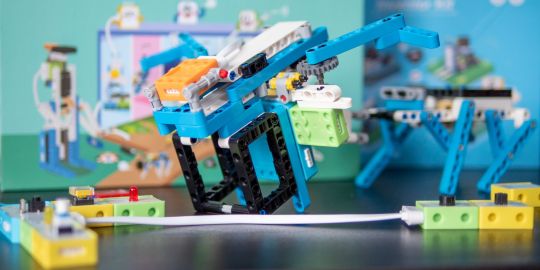
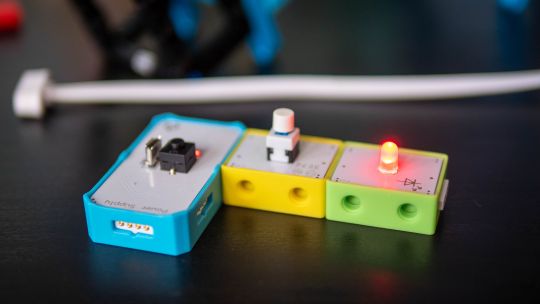

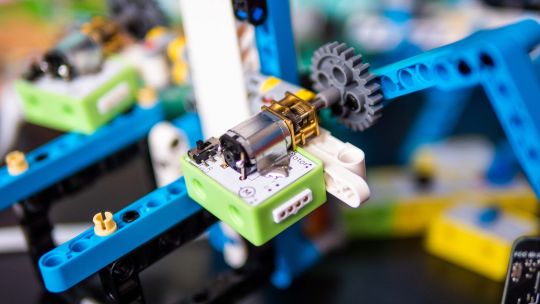




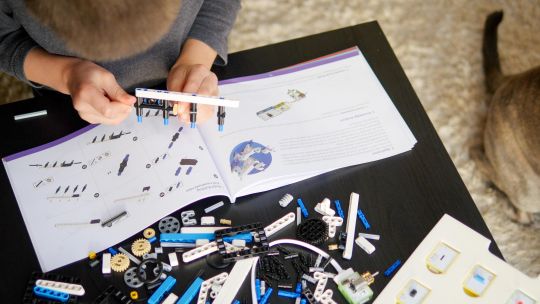
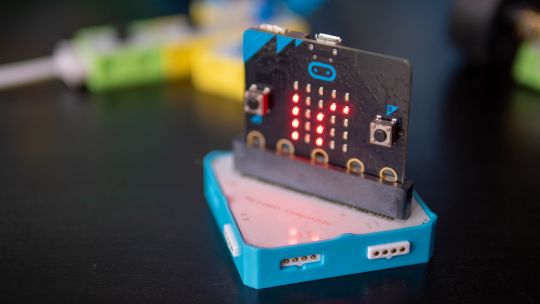


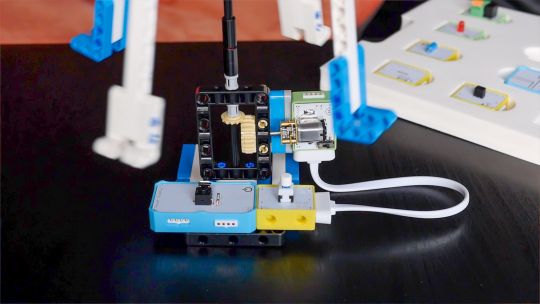
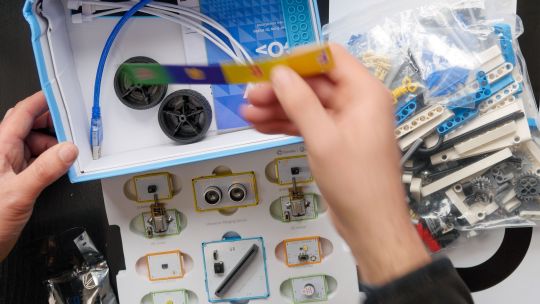
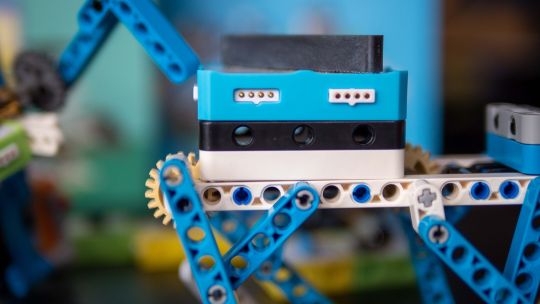
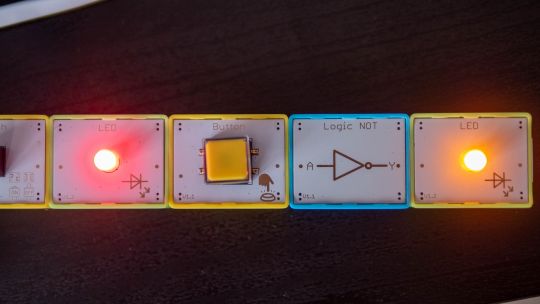
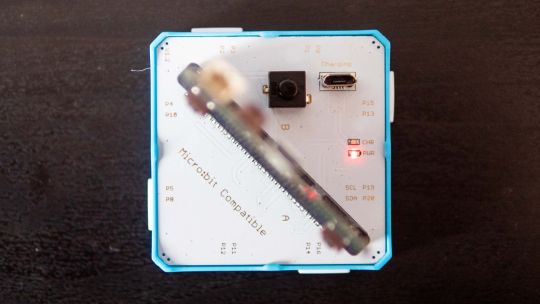
Shop Now
Brick builds, combined with magnetic electronics blocks, and programmable micro-controllers. Does it get any better than this? I think my long search for the perfect STEM learning kit is complete. If you have young children just coming up to the right age for it, the Crowbits system can accompany them throughout their primary education and beyond.
Key Features
Magnetic blocks build circuits
Kits to suit various levels
Specifications
Brand: Elecrow
Development Platform: Scratch and MicroPython
Pros
LEGO-compatible to customize your builds
Full range of components planned
Level up with your child with more complex projects and programmable microcontroller
Familiar Scratch-based programming software
Cons
It's a Kickstarter
Instructions need work expanding on the principles and explanations
Buy This Product

Elecrow Crowbits other
Shop
// Bottom var galleryThumbs1 = new Swiper('.gallery-thumbs-1', { spaceBetween: 10, slidesPerView: 10, freeMode: true, watchSlidesVisibility: true, watchSlidesProgress: true, centerInsufficientSlides: true, allowTouchMove: false, preventClicks: false, breakpoints: { 1024: { slidesPerView: 6, } }, }); // Top var galleryTop1 = new Swiper('.gallery-top-1', { spaceBetween: 10, allowTouchMove: false, loop: true, preventClicks: false, breakpoints: { 1024: { allowTouchMove: true, } }, navigation: { nextEl: '.swiper-button-next', prevEl: '.swiper-button-prev', }, thumbs: { swiper: galleryThumbs1 } });
Take a moment to imagine the perfect electronics and engineering learning kit. It would be so simple even a child could use it: magnetic blocks, perhaps? Modular, so you could swap bits in and out to modify projects. It would scale up, so you could start with simple circuits and move on to programmable hardware, catering to all levels of the curriculum. Lastly, I'd throw in LEGO-compatible, because LEGO bricks are the best tool for creativity and engineering ever made.
That's exactly everything the Elecrow Crowbits system is, and it's crowdfunding now.
youtube
Disclaimer: This is a Kickstarter
Four of the five available Crowbits kits were sent to us for evaluation during the Kickstarter, however, they are still very much in the prototype stage, and we've evaluated them on that basis. Some bits were missing, some were non-functional, and the software is still a work-in-progress. This is to be expected at this stage, but the core system is solid.
Also, the usual Kickstarter caveat applies: your money is at risk, and there's no legal obligation with any crowdfunding campaign to actually deliver a product. That said, this isn't Elecrow's first campaign (the CrowPi 1 and CrowPi 2 were a huge success). It's a well-established company with a reputation to maintain and a good track record, so we think the risk is minimal.
What Are Crowbits?
Crowbits modules are magnetic electronics blocks with LEGO-compatible pin holes on the side and stud holes underneath. The 4-pin pogo connections are either male or female, and have a small protrusion on the bottom to prevent wiring them the wrong way around.

Extension cables enable you to place a module elsewhere, and these too feature the same magnetic connection and can't be plugged in the wrong way. The whole system operates on a safe, low voltage, and with rechargeable battery blocks that charge over micro-USB.
Each Microbits module is color-coded for ease of understanding:
Blue modules are power and logic. In the basic sets, these are simple battery modules that don't require programming. In more advanced sets, these are programmable microcontrollers with pin numbers on the connections for addressing modules directly.
Yellow modules are inputs: buttons, basics sensors and such.
Green modules are outputs: LEDs, motors, buzzers, relays.
Orange modules are special and require serial communication lines to the programmable hub. These include things like color sensors, joysticks, or 2G communications hub.
A large range of Crowbits modules are planned, though these will be available separately at a later date. For now, you can only purchase the full Crowbits kits with their included module selections.
No Programming Required!
Since the first two Crowbit kits require no programming, how does that work? Simple, as long as you follow some basic rules:
Yellow input modules must be placed on the left of green output modules (when viewed with the module name being on the top, and symbol in the bottom right).

One input module can control a chain of output modules.

A new input-output chain will be created if you add another input module to the right.
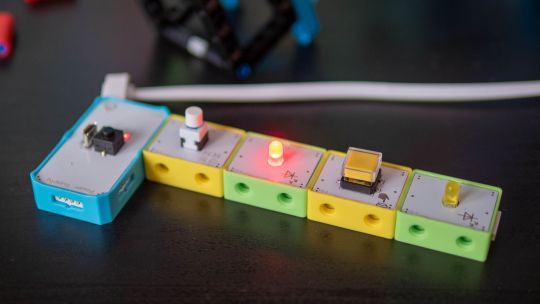
Blue battery modules can go anywhere in the circuit, and their orientation doesn't matter as long as the pins are compatible.
With this, kids can create basic circuits. For more complex circuits (that still don't need programming), a series of bitwise logic operator modules are planned. A "NOT" logic gate is included in the Hello kit, and more will be available later.

This enables you to reverse an input, such that a button that would normally turn on an LED, would now function as a button to turn the LED off.
Crowbits Kits
The Crowbits Kits are divided into five stages of increasing complexity, but all share a common system and are compatible with each other. Some modules are duplicated between kits. Let's take a look at the contents and direction of each kit.
Hello Kit
The most basic of kits is also the cheapest, available for $30. It includes seven modules, one of which is a small battery module. Five project builds are included along with pre-cut cardboard parts to stick together. No programming is required, and the Hello kit is suitable for ages 5-6.

Explorer Kit
The Explorer Kit continues the no-programming theme, but adds movement through the use of a motor module and pack of technic pieces for some basic engineering. A total of eight modules are included, one of which is a medium-sized battery pack. The build guide contains a mix of brick-based and cardboard projects. With a little adult supervision on the trickier mechanical elements, 7-8-year-olds should be able to handle this kit. The Kickstarter price is $80, rising to $130 RRP.

Inventor Kit
The Inventor Kit is a big step up that introduces programming concepts and more complex mechanical engineering. The main module of this kit requires a BBC Micro:bit (v1) to function. This is not included, though it may be available as an add-on if you don't already own one.

For those not familiar, the BBC Micro:bit is an all-in-one programmable microcontroller specifically designed for use in the school curriculum. It's widely used in UK schools, and gaining ground in the US.
Related: 10 Beginner Projects for the BBC Micro:bit
Ten modules are included as well as a large pack of technic bricks, suitable for building projects such as an obstacle avoidance car or color-sorting robot.

Given the use of BBC Micro:bit and Scratch programming in schools from around age 8, this kit would be suitable for 8-12 year-olds. It's available during the Kickstarter for $90, RRP $130.

Creator Kit
This was not yet ready for review at the time of writing, but the core of the Creator kit is an Arduino-based board, and includes 11 modules more suited to smart home projects and more complex interaction programming, along with a small selection of technic blocks. There are no movement motors. The Creator kit is available for $100 now, or RRP $150 later.
Master Kit
The most advanced kit in the range, the Master Kit uses an ESP32-based board at its core, featuring a TFT color screen. Also in the kit are some joystick modules, a small keyboard, laser ranging sensor, and 2G connection.

The Master Kit has a small number of technic bricks, and as well two silicone cases for a working phone, and a retro game console. It's designed to show the modules coming together to create a finished product. However, programming the firmware is quite complex, so I'd rate this kit as suitable for 14 and up. The early pricing is $100 for the Master kit, rising to $150 RRP.
LEGO-Compatible, not Actual LEGO
I should note that the Crowbits kits are not an officially endorsed nor licensed LEGO group product, and do not contain actual LEGO bricks. Instead, the LEGO-compatible technical bricks carry the brand name "CaDA", which I've not come across before.

That said, the bricks are well made and connect simply and securely, which is always a worry with off-brand construction bricks. For context, you can buy a set of at least 500 CaDA technic bricks on AliExpress for under $30.

You can of course decorate the builds with your own real LEGO, should you wish.

As a nerdy side-note, be warned that the instruction for the brick builds are read left-to-right, rather than top-to-bottom. If you're a LEGO family, this is mildly infuriating and means your child might skip steps!
Programming with LetsCode
Programming your Crowbits kits is done using Elecrow's new LetsCode (currently only for Windows, but support is promised for Mac OS and Raspberry Pi later).
LetsCode is a customized version of Microsoft MakeCode, which is itself based on the graphical block programming language, Scratch 3.0. As such, it'll be immediately familiar to anyone with experience of Scratch programming. It's widely used for introductory programming classes all over the world, and includes graphics blocks for all common concepts like loops, branching, and functions.
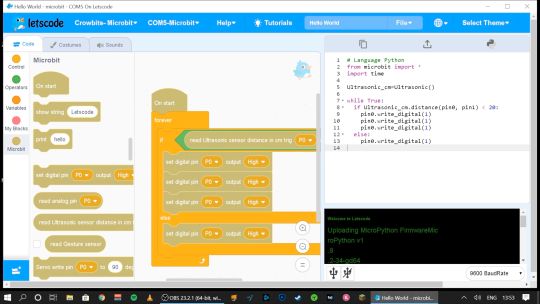
Pin numbers are printed directly on the blue modules, so it's easy to see which component is attached where.

If you outgrow graphical programming, you will also be able to program in MicroPython or Java, though this was not supported at the time of testing.
Should You Back the Elecrow Crowbits?
The Crowbits magnetic circuit system is easy to use and scales well for different ages and user levels. You can start with simple circuits, and move on to programmable logic controllers, and still reuse all the bits. It's a system that will grow with your child throughout their learning journey from age 6 to 14. Very few educational toys can make that sort of claim.
If you want your child to have a competitive edge in the programming, electronics, and engineering aspect of the STEM curriculum, then supplementing schoolwork is a great idea.

Even though many schools have now returned, it's possible you've opted to fully homeschool or just want to supplement their existing classwork. Over the next few years, schools will inevitably be different. There'll be a lot less practical work going on because of the aspect of touching shared equipment, so having this sort of kit available at home with software that's familiar will be of great benefit.
That said, the Crowbits kits vary greatly. If you're a completionist, you can grab a bargain bundle during the Kickstarter of every Crowbits kit available, for a cool $400 (rising to $600 RRP after the campaign).
But I think the best value comes from the Explorer, Inventor, and Master Kit bundle for $270. This includes a ton of mechanical bricks and plenty of movement modules. The BBC Micro:bit compatibility ties in perfectly to the existing curriculum (in the UK, anyway), while the ESP32 board is a good step up once they're old enough.

If you're only going to purchase one kit, I'd recommend skipping the Hello kit and going straight to Explorer or Inventor, depending on whether you want programming introduced yet. The cardboard projects in the Hello kit just felt a little too contrived and didn't engage my 6-year-old son in the same way LEGO does.
While the mechanical elements of the Explorer kit may need a little adult supervision, he was quite capable of the bulk of construction and able to use the LetsCode software thanks to previous experience with Scratch.

On the other end of the scale, I wasn't overly impressed with the Master kit either. The game console project, while it produces a cool end product, consists of simply the main board and two joystick modules on the side.

There is no construction, and the hardest part is loading on firmware, which tedious at best. The phone project is also impressive but limited to a 2G network, many of which will be disabled by the time the Crowbit kits ship. The ESP32 mainboard is technically impressive, but once your teenage child is ready to program this thing, the magnetic block system may not be appropriate anymore. It's a good addition to your collection if you're purchasing the earlier sets too, but I wouldn't purchase it alone.
Overall though, I think my long search for the perfect STEM learning kit is complete. If you have young children just coming up to the right age for it, the Crowbits system can accompany them throughout their primary education and beyond. And when they're done with it in a decade, we'll probably all be learning in VR anyway.
Alternatives to Crowbits
Crowbits isn't the only STEM kit around. The closest competitor is the littleBits STEAM kit, which retails at around $400, doesn't include any technic bricks, and has a limited selection of magnetic modules. It's more closely aligned to the US curriculum though with more extensive teaching materials, and already in use in many schools.
The LEGO groups' own Robot Inventor MindStorms kit is also worth considering, retailing at $350. It's focused more on robotics than basic electronics, and isn't suited to younger children, but the software is also based on Scratch. It would make a great step once your child reaches 14, and has outgrown the magnetic Crowbits system.
Elecrow Crowbits: The Ultimate LEGO-Compatible STEM Learning System That Grows With Your Child published first on http://droneseco.tumblr.com/
2 notes
·
View notes